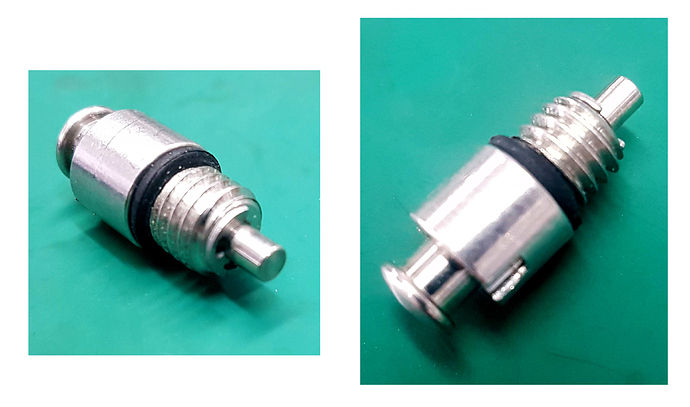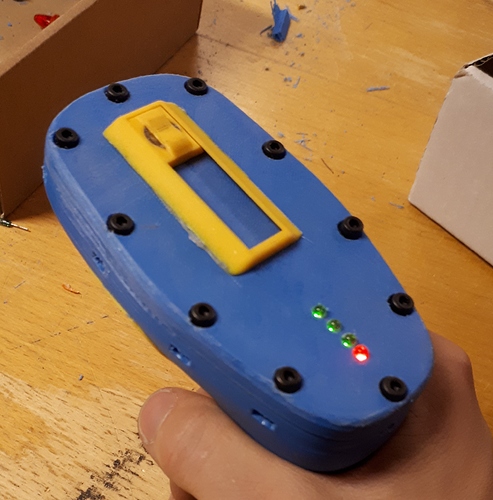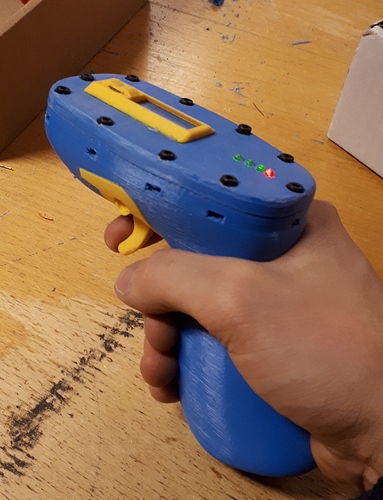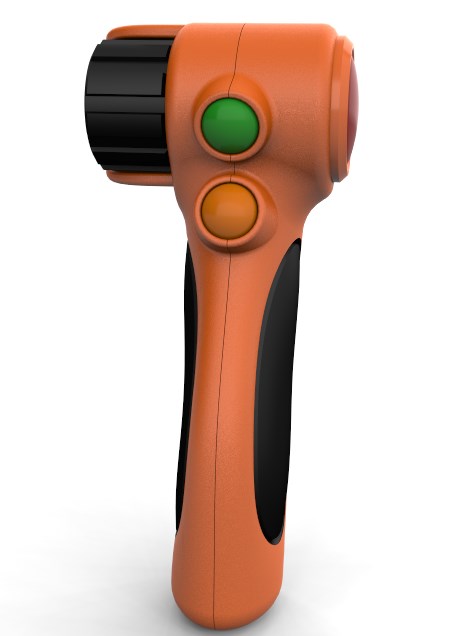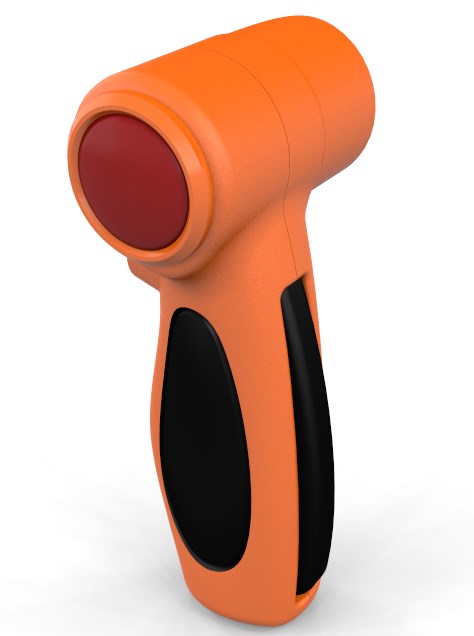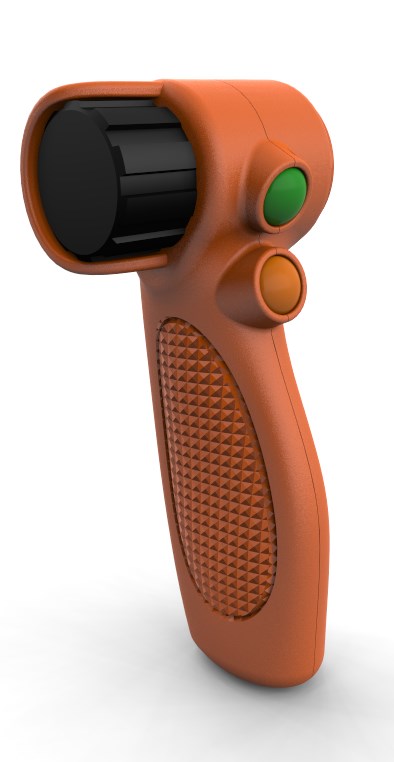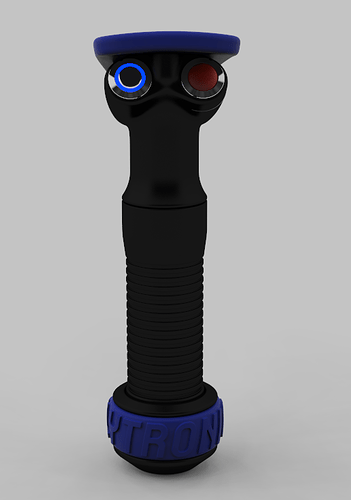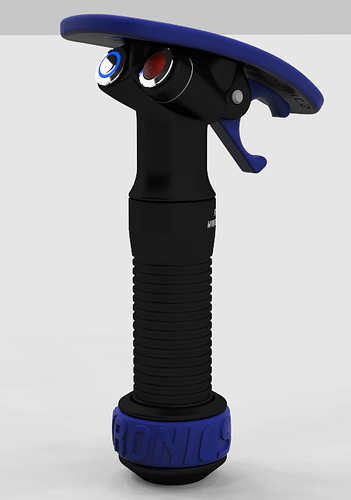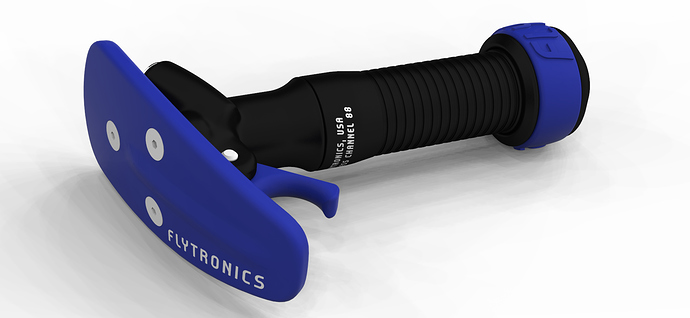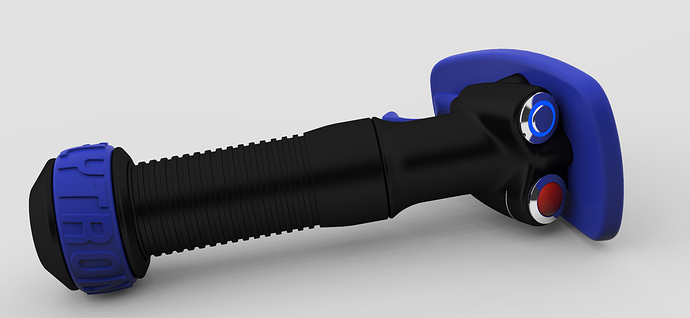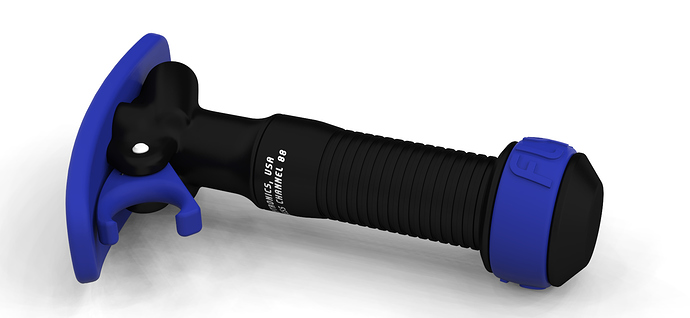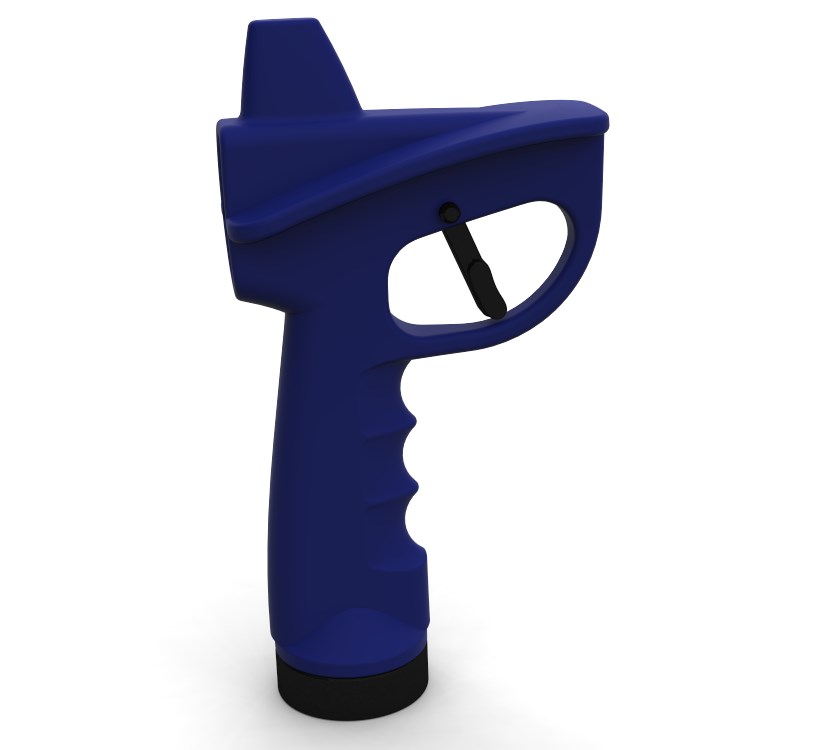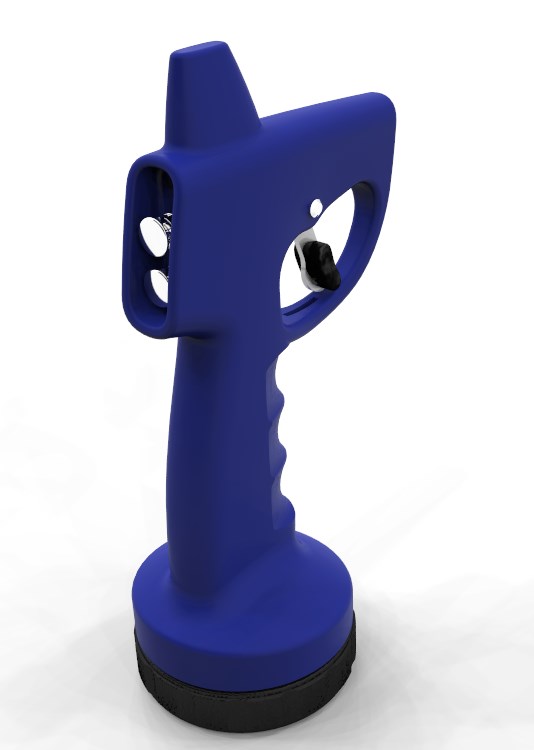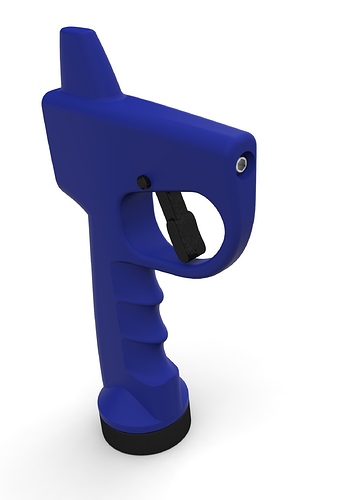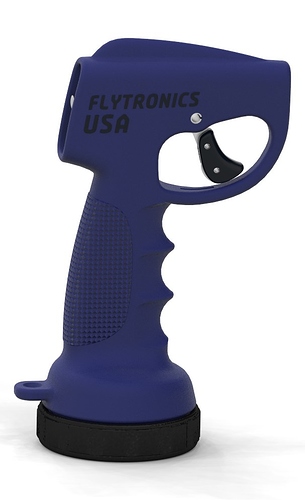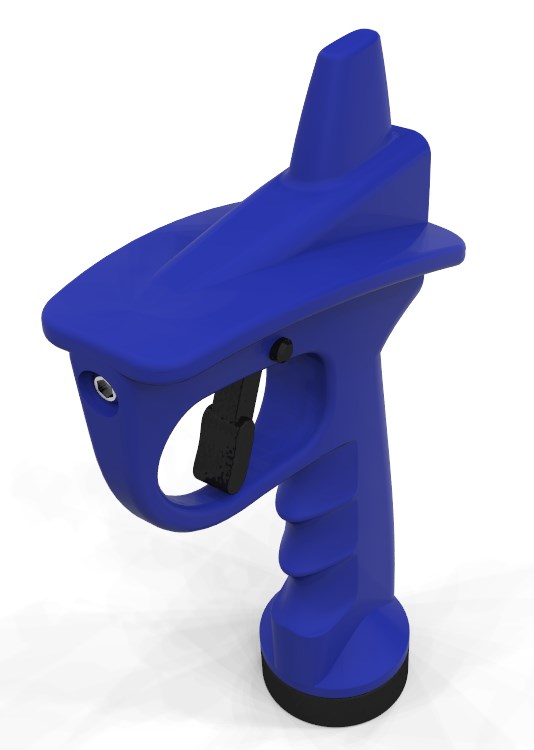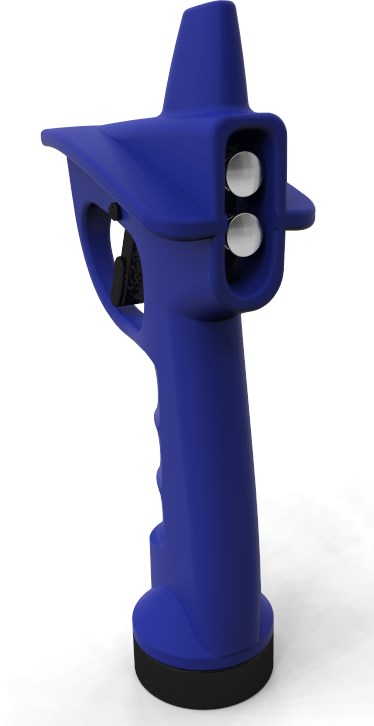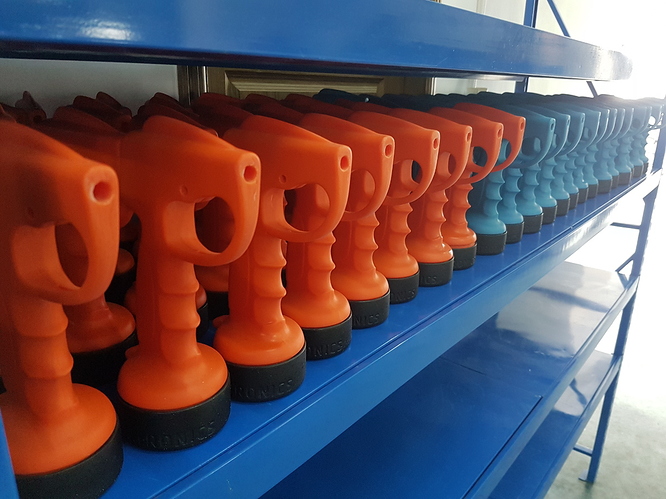Hi, I have a remote controller I designed to test an esc & direct propulsor I’m working on. It works well and has helped me blow up my esc repeatedly as I climb the bldc learning curve  It’s a little different, it uses its incline to control throttle. There’s one button only and that’s GO, then you ‘twist’ the controller like twisting a knob, and throttle is 100% at 45’. I thought it was elegant compared to pots, hall effects, etc which require pentrating the case.
It’s a little different, it uses its incline to control throttle. There’s one button only and that’s GO, then you ‘twist’ the controller like twisting a knob, and throttle is 100% at 45’. I thought it was elegant compared to pots, hall effects, etc which require pentrating the case.
I’ve used Cypress BLE4 modules, one at each end of the link. The hand held end is the length and shape of a ballpoint pen, but more like 20mm wide. Inside is an AA battery (considering AAA), the bluetooth module, an inclinometer, and the IP67 button penetrates the case and plugs in (wired so it can be replaced, everything else coated/potted.) I haven’t actually finished a case, just using a piece of pvc pipe for now, but a 3D printed, two part and screw together with oring was the plan.
At the ‘wet’ end is an skinny IP68 connector that you’d mount to penetrate the board/mast/propulsor, then the mating cable running up to very similarly shaped ‘antenna’ case that sits clear of the water in fresh air being the receiving end of the link. It can hang loose, or be attached, or inside a foam board, etc.
Right now it’s coded I2C for my esc, but I’ve programmed these parts to drive off the shelf escs, not much work there. I would make the source and environment open so you could program gesture rec, different behaviours in to match your system; do what you want with it.
Because it’s regular Bluetooth LE 4 you can use your iPhone to control the ‘antenna’ end if you want, or shoot data back from the efoil to your iphone/laptop… ?
Its also pretty easy for me to add the Cypress USB bridge (miniprog) to the hardware so that you can just plug in USB and program from the development environment, similar to how you load an Arduino (main advantage you don’t need a tool to reprogram it, the tool is built in.) Psoc creator IDE is best in class and anyone who uses Arduino IDE can work it out IMO if you wanted to hack. It’s all in C and you are smart people.
The prototype works for me but needs updating and readying for other people to be able to reliably use. If enough people want one I can kickstart a hardware build over December, ship Jan/Feb, IMO US$150 for the pair before shipping - I’d have to work this out with some care if there’s interest.

 It’s a little different, it uses its incline to control throttle. There’s one button only and that’s GO, then you ‘twist’ the controller like twisting a knob, and throttle is 100% at 45’. I thought it was elegant compared to pots, hall effects, etc which require pentrating the case.
It’s a little different, it uses its incline to control throttle. There’s one button only and that’s GO, then you ‘twist’ the controller like twisting a knob, and throttle is 100% at 45’. I thought it was elegant compared to pots, hall effects, etc which require pentrating the case.